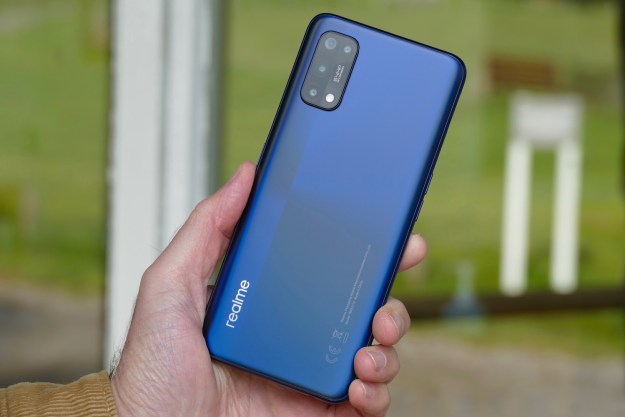Despite being the youngest smartphone company on the block, only springing out of Oppo on August 3 on this year, Realme has wasted absolutely no time in putting out as many phones as possible, launching the Realme 1 and the Realme 2 in just a matter of months.
Realme isn’t pausing to take a breath yet, as it’s now launching the Realme 2 Pro — a new offering with a 19.5:9 aspect ratio, full 1080p resolution, and A.I.-powered camera trickery. Here’s everything you need to know.
Design and display

You won’t find any outdated looks here — the Realme 2 Pro follows the global smartphone trend of reducing bezels in favor of a larger screen. The front of the device is dominated by a 6.3-inch display surrounded by exceptionally thin bezels for an extremely high screen-to-body ratio of 90.8 percent. There’s a very slight notch at the top of the screen, where the bezels slope inwards in a teardrop shape to accommodate the front-facing camera — which Realme calls the “Dewdrop Full Screen”.
Flip the phone over and you’ll find two camera lenses arranged horizontally on the top left, with a fingerprint sensor found centered beneath the camera. The back panel of the phone itself has been ergonomically shaped to fit the hand better, and should improve grip on the device. It comes in three varieties: Blue Ocean, Black Sea, and Ice Lake.
Specs and battery
The Realme 2 Pro comes with some solid midrange specs, including a strangely varied amount of RAM.
Key Specs
- CPU: Qualcomm Snapdragon 660
- Memory: 4/6/8GB
- Storage: 64/128GB
- MicroSD storage: Up to 256GB
- Screen size: 6.3 inches
- Resolution: 2340 x 1080
- Battery: 3,500mAh
- Operating system: Android 8.1 Oreo (under ColorOS)
Users will be able to pick between several different models of the Realme 2 Pro. The base model contains 4GB of
Regardless of the amount of
Software and special features

The Realme 2 Pro is equipped with Android 8.1 Oreo running underneath the ColorOS 5.2 custom skin. We’ve seen Oppo’s ColorOS in other phones before, including the Find X and the Realme 2, and we’re not massive fans of this particular
Outside of the OS itself, the Realme 2 Pro’s features read off well. There’s support for facial unlocks, AR music stickers, and improved sound quality, as well as support for the Google Assistant, Smart Scan, and a gaming mode that promises to boost user experience within games.
Camera
You’ll find two camera lenses around the back of the Realme 2 Pro — a 16-megapixel main lens, paired up with a 6-megapixel lens that gives the DSLR-like “bokeh” background blur that we’ve all come to know and love. This portrait mode supports five different lighting effects, but also comes with A.I.-powered assistance to help you take the perfect shot. This A.I. is able to recognize backgrounds and do some automatic post-processing after the shot, removing noise and altering the exposure levels.
Switch around the front and there’s a monster hiding in the dewdrop. The Realme 2 Pro is equipped with a massive 16-megapixel front-facing lens with an f/2.0 aperture. Realme is particularly proud of the Realme 2 Pro’s selfie shooter, and boasts it can recognize up to 296 facial identification points, and offer 8 million beautification options for your selfies.
Release date and price
The Realme 2 Pro costs 13,990 Indian rupees (roughly $194) for the 4GB/64GB model, 15,990 Indian rupees (roughly $220) for the 6GB/64GB model, and 17,990 Indian rupees (roughly $250) for the 8GB/128GB model. For this level of
Interested? Bad luck for the moment — while Realme has global ambitions, the Realme 2 Pro is currently only available in India.
Editors' Recommendations
- Google accidentally leaked the Pixel 8 Pro and Pixel Watch 2
- Watch all of Apple’s Far Out event videos: iPhone 14, Apple Watch 8, and AirPods Pro 2
- Realme GT 2 Pro has the world’s first 150-degree wide-angle camera on a phone
- Realme GT 2 Pro set for December 20 launch with the new Snapdragon 8 Gen 1 chip
- The Pixel 6, Pixel 6 Pro are coming with a new chip, A.I., and a 4x zoom camera


